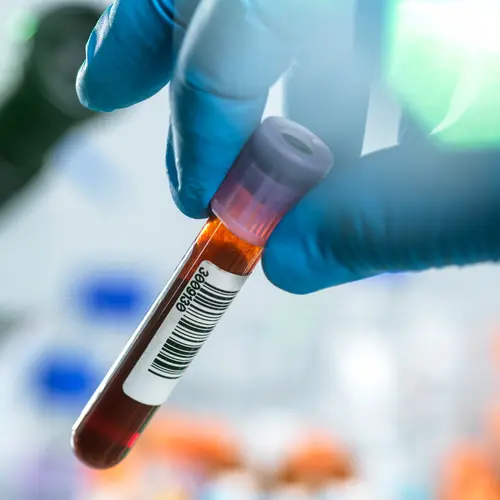In men and boys, the testicles hang outside the body in a pouch of skin called the scrotum. Because of their location, many types of accidents can cause testicular injuries.
Blunt trauma (a strike) causes about 85% of testicular injuries. Examples include:
- Getting kicked
- Getting hit by a baseball
- Motorcycle accident
- Bicycle accident
Other mishaps can cut or pierce the scrotum and injure the testicles. These include animal bites, bullet wounds, and accidents with machinery.
Types of Testicular Injury
Testicular trauma can cause different problems. That's because testicles are made of different types of tissue. The scrotum also contains other structures that are attached to the testicles.
Testicular injuries include:
Rupture or fracture. An injury can rupture or tear the tough, protective covering surrounding the testicle and damage the testicle. This is called a testicular rupture or fracture.
Contusion. When an accident injures blood vessels in the testicle, it can cause a contusion, which may involve swelling, bleeding and bruising.
Torsion. A tube called the spermatic cord contains blood vessels that lead from the abdomen to the testicle. A scrotum injury can cause this cord to twist, which is called torsion. Torsion can also happen spontaneously, without an injury.
Hematoceles. These can occur when blood collects under a layer of the protective covering around the testicle.
Dislocation. Some accidents can push the testicle out of the scrotum. It may end up in the abdomen, near the pubic bone over the penis, or other areas near the scrotum. This most often happens in motorcycle crashes when the testicles collide with the gas tank.
Epididymitis. Testicular trauma can injure the epididymis, leaving it inflamed or infected. The epididymis is a coiled tube that holds sperm for a while after they leave the testicle.
Infections. Animal bites can also cause infections in the scrotum.
Degloving. In this type of injury, the scrotum is torn away, like removing a glove from a hand.
Symptoms of Testicular Injury
As many men and boys know all too well, a testicular injury typically causes substantial pain in the scrotum. There is sometimes pain in the abdomen, as well.
Other symptoms can include:
- Nausea (especially common with testicular torsion)
- Bruising or discoloration of the scrotum
- Swelling of the scrotum
- Blood in the urine
- Difficulty urinating
- Fever
Diagnosing Testicular Injuries
It's important to see your doctor if you a testicle injury. Some of these problems, like testicular torsion, are a medical emergency.
Serious injuries can cause you to lose the testicle or cause the testicle to shrink. They may also threaten your future fertility (the ability to have children). Seeing your doctor promptly can lower your chances of these complications.
Quick medical treatment may also help you feel better and get you back to your usual activities faster.
Your doctor will get your medical history. The doctor will want to know about the accident, as well as other information. Be prepared to discuss:
- When the injury occurred
- How it happened
- How you felt after the injury
- How you feel now
- If you've ever had other problems with your penis, scrotum, or testicles
Even if you're embarrassed about how the injury occurred, be sure to answer your doctor's questions honestly.
The doctor will also check your scrotum for signs of injury. And the doctor may examine your penis and other body parts that could be injured.
In some cases, you may also need:
Ultrasound imaging. A health care provider will hold an ultrasound device against your scrotum. This uses painless sound waves to create an image of the testicle and other tissues on a viewing screen.
MRI. This creates detailed images of your testicle and other structures inside your scrotum.
Exploratory surgery. In some cases, a surgeon will need to make an incision (cut) in your scrotum to look inside it. The surgeon can see which structures are injured, and if needed, treat them during the procedure.
Treating Testicular Trauma
Depending on how seriously you're injured, you may be able to treat testicular injuries on your own. However, severe testicular trauma requires treatment from a surgeon or other specialist.
Treatments for some types of testicular trauma include:
- Placing an ice pack against your scrotum
- Resting and avoiding strenuous activity
- Medication to treat pain and inflammation
- Antibiotics to prevent or treat infection
- Wearing a jockstrap to support your testicles
In the case of torsion, treatment involves a doctor turning the testicle back to its proper place by rotating it while holding the scrotum. However, surgery is typically needed, even if the testicle has been turned back into place.
If the accident has dislocated your testicle, a doctor may be able to press it back into position. Surgery may be needed.
Other types of surgery include opening the scrotum to stitch the covering of your testicle back together. In some cases, the surgeon will need to remove part or all of the testicle. If your scrotum has been badly damaged in an accident, the surgeon may need to move skin from another part of your body to fix it.
Your doctor may recommend an ultrasound of your testicles after your injury has healed, to make sure there are no other abnormalities.
Preventing Testicular Injuries
You can't always prevent a testicle injury, but these steps will help protect you:
- Wear a jockstrap when you're playing sports. If you're doing an activity that could lead to a hard strike -- such as baseball or martial arts -- also wear a protective cup. Be sure the cup fits well and is properly placed over your penis and testicles.
- Wear your seat belt while in a vehicle.
- Use caution when riding motorcycles and bicycles.
- Take care near machinery that could snag your clothing or skin. Avoid loose clothing and belts. Follow all safety rules while using machinery.

